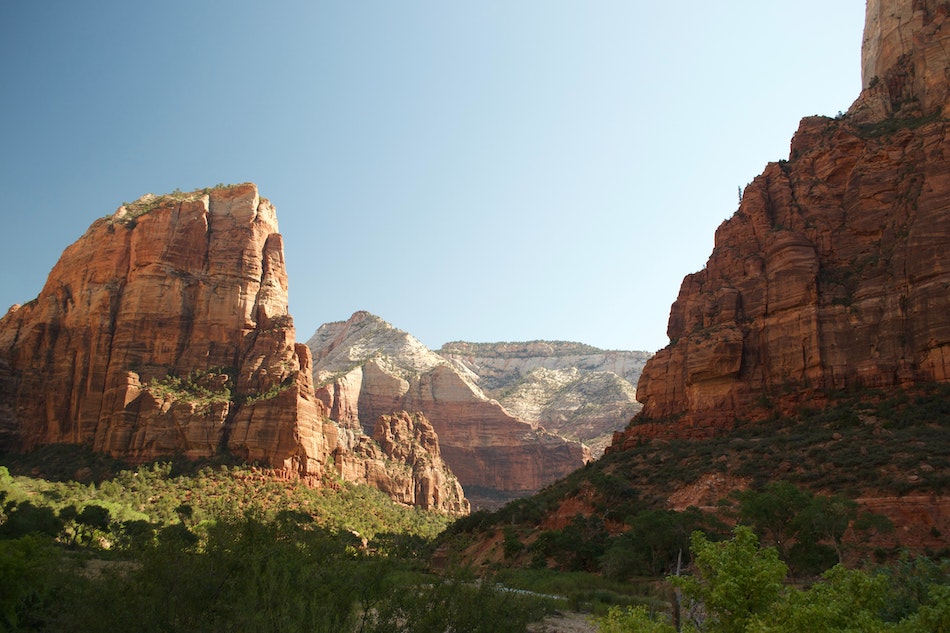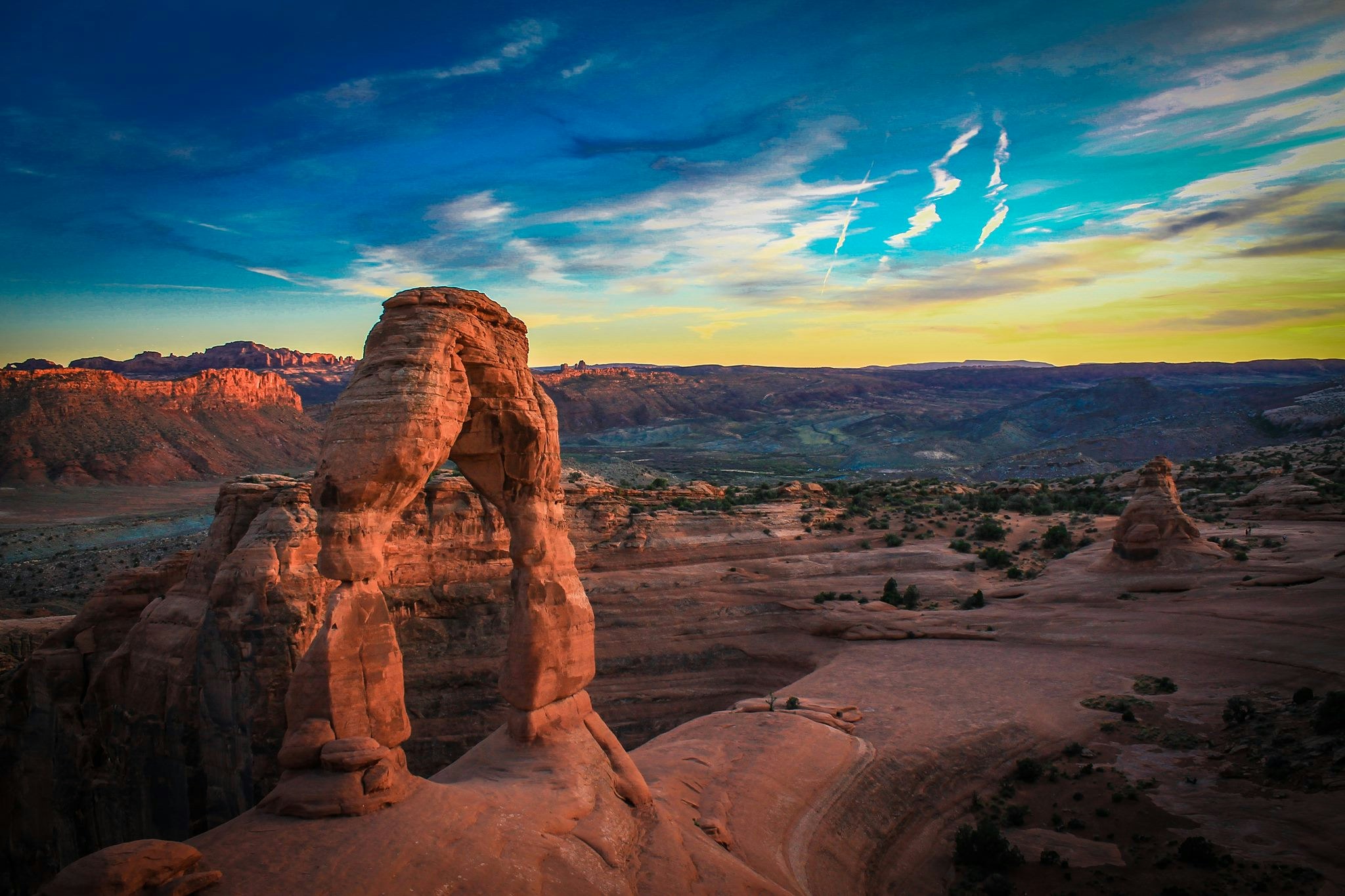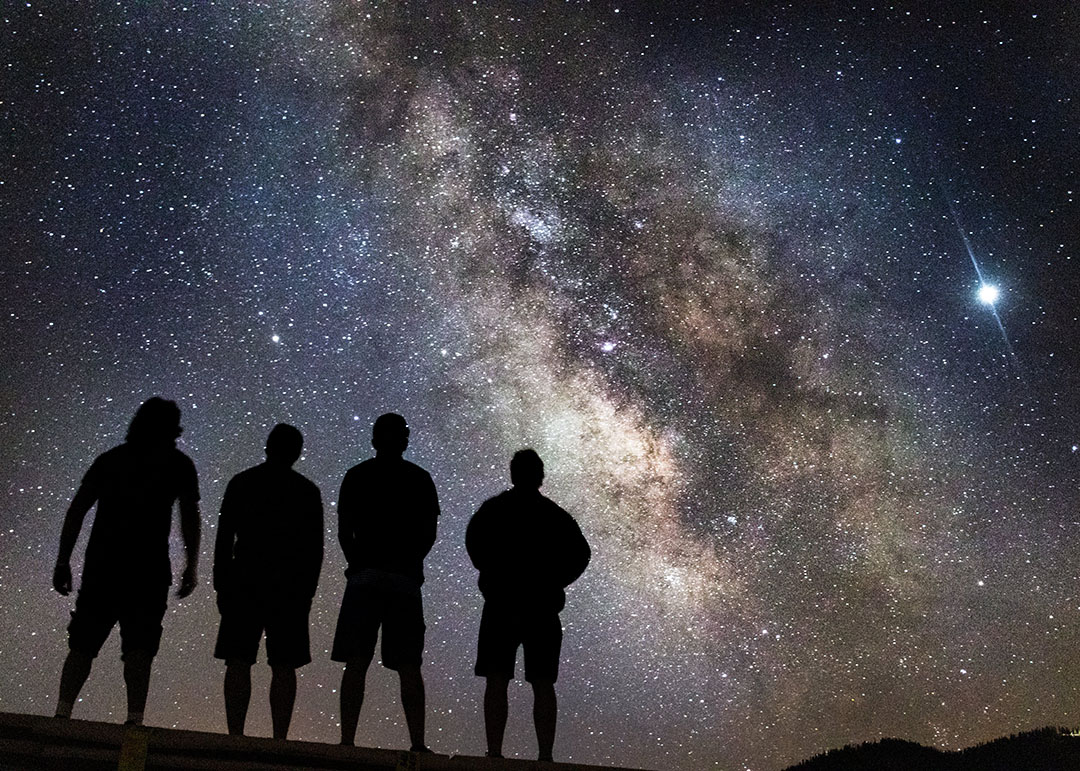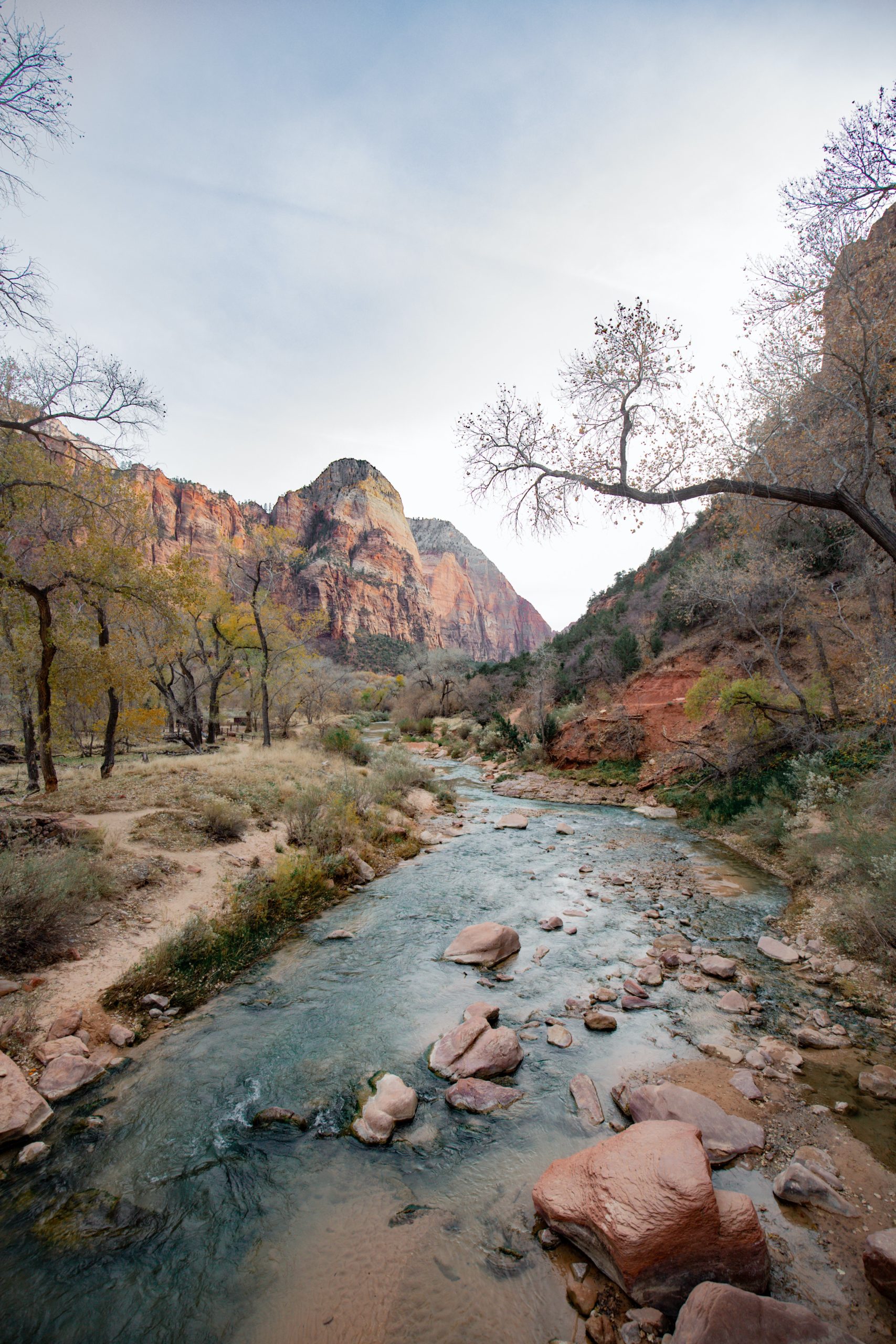The History of Zion National Park
Have you ever wondered about the history of Zion National Park? With its picturesque beauty and breathtaking view, visitors can enjoy a wonderful experience in the calm and peaceful environment. Humans have enjoyed the landscape of Zion since 6,000 BC. If you have visited or are planning to visit Zion National Park, you have probably wondered how the towering sandstone walls and the intricate slot canyons formed. What if we told you that millions of years have influenced the geological identity of Zion National Park. Lucky for us, the Mormon settlers in the 1800s found the beautiful Zion canyon to be just as breathtaking as we see it today and preserved it for the enjoyment of future generations. How did this national park come to be, and why is it imperative to safeguard this unique geography?
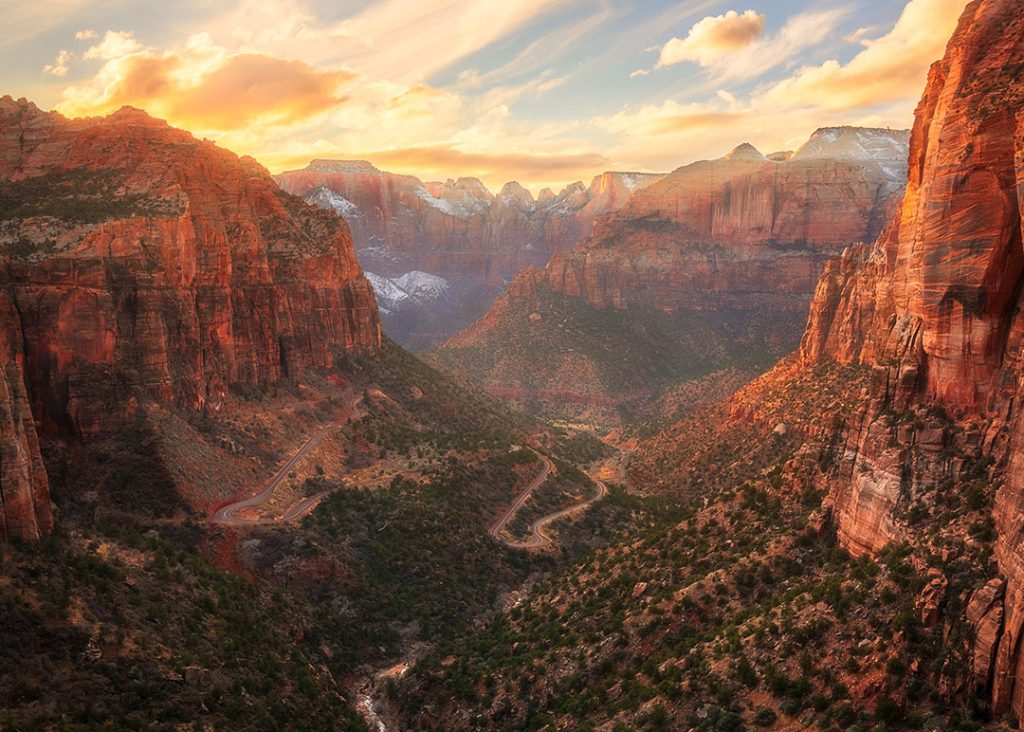
Environmental & Geological History
Let’s begin to understand the human use of this site divides into four historical periods. In this article, we are going to dive into each period separately. The formation of Zion National Park represents millions of years of erosion. The park is located at the junction of the Colorado Plateau, the Great Basin, and the Mojave Desert. This gives it a variety of unique habitats and geography. Flowing water created most of the slot canyons and natural arches that visitors encounter. Millions of years ago, a shallow sea covered this region of the United States, featuring ponds, streams, rivers, and a dry shore area. As the climate changed and time passed, geological forces lifted the region alongside the formation of the Colorado Plateau. This caused the region to evolve into the arid climate we experience today. However, it did not always look how it does today.
The Archaic Era
The Emergence of the Basketmaker Civilization
The emergence of the Basketmaker civilization around 300 B.C. marked a significant turning point in the history of the region that would later become known as Zion National Park. These early groups were pioneers in experimenting with horticulture, integrating wild food items like corn into their diet.
The Introduction of Corn
Corn, found along the riverside and near natural springs, became a crucial component of their sustenance. The presence of these corn-based diets led historians to refer to them as ‘the Basketmakers’ due to the abundance of coiled baskets discovered in the archaeological sites of Zion.
Innovative Food Storage: The Pithouses
With the expansion of their horticultural practices, the need for efficient food storage became paramount. The Basketmakers ingeniously designed pithouses to address this challenge. These storage units were constructed with either stone or grass, serving as repositories for their harvested crops, including corn and other foodstuffs. These pithouses not only preserved their precious resources but also reflected the Basketmakers’ growing understanding of agriculture and their commitment to improving their way of life.
Pre-Basketmaker Seed Collectors
Before the Basketmakers fully embraced agriculture, a smaller group of people had utilized Zion as a gathering ground. They ventured into the wilderness to collect essential seeds, as well as a wide array of valuable wild plants and nuts. Their endeavors left behind traces in protected sites, providing archaeologists with a wealth of information about their way of life.
Craftsmanship and Daily Life
These sites yielded numerous perishable items such as intricately crafted baskets and comfortable fiber sandals, showcasing their skill in weaving and crafting. The toolkits of these early Zion inhabitants included tools like knives, drills, and darts, which were used for hunting and crafting, further exemplifying their resourcefulness and adaptability to their environment.
The Transition to Horticulture
The transition from seed collectors to horticulturists marked a pivotal moment in the history of Zion. The Basketmakers’ innovative approaches to food production and storage laid the groundwork for future developments in the region and set the stage for the complex civilizations that would follow, leaving an indelible mark on the landscape and history of Zion National Park.
The Formative Era
Transition to Full-Fledged Horticulture
The Formative Period marked a significant transition from small-scale gardening to full-fledged horticulture for the people of this region. Two distinct groups emerged during this era, the Virgin Anasazi and the Parowan Fremont, both of whom played a crucial role in shaping the archaeological landscape of the area.
Establishment of Pueblos and Pithouses
One of the notable features of this period was the establishment of pueblos, which were communal living sites with shared storage units known as pithouses. These pithouses were used to safeguard the precious harvests of corn, underlining the importance of this staple crop in the diet of the inhabitants. The presence of grinding stones is a testament to the integral role of corn in their daily sustenance.
Shift to Sedentary Life and Ceramic Vessels
The transition from a nomadic lifestyle to sedentary living is exemplified by the appearance of ceramic vessels. These vessels not only served practical purposes but also reflected the cultural and technological advancements of the time. This shift towards sedentary life allowed these groups to develop more complex and structured societies, with an increasing focus on agriculture and trade.
Technological Innovations: Arrows and Bows
Technological innovation was another hallmark of the Formative Period. The adoption of arrows and bows marked a significant step forward in hunting and warfare techniques. This advancement allowed these groups to better navigate their environment, contributing to their survival and growth.
Mysterious Disappearance by A.D. 1300
However, by the time A.D. 1300 rolled around, both the Virgin Anasazi and Parowan Fremont groups mysteriously vanished from the region. The reasons for their disappearance remain a subject of speculation and debate among researchers and archaeologists. Some believe that extensive flooding in the area may have made horticulture almost impossible, driving these communities away. On the other hand, there’s also the notion that the arrival of the Numic group in the region by A.D. 1100 may have led to conflicts or competition for resources, ultimately causing the decline of the Virgin Anasazi and Parowan Fremont groups.
Legacy and Intrigue of the Formative Period
The Formative Period thus represents a pivotal chapter in the history of this region, characterized by the emergence of distinct cultural groups, the development of sedentary lifestyles, and the adoption of innovative technologies. Yet, the mysterious disappearance of these groups adds an element of intrigue to this historical narrative, leaving us with more questions than answers about their ultimate fate.
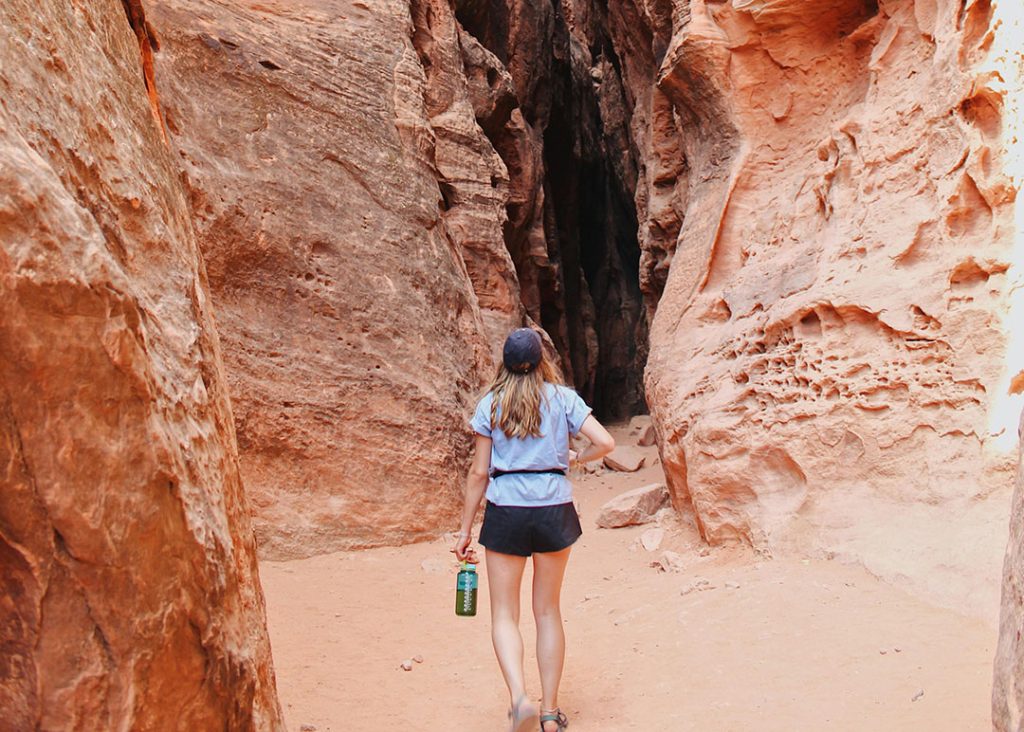
The Neo-Archaic Era
The Arrival of the Numic People
During the era spanning from A.D. 1300 to the 1700s, the Numic people established a significant presence in the region that is now known as Zion National Park. Their way of life was intricately connected to the dynamic and diverse ecosystem of Zion.
Embracing a Mobile Existence
Unlike some of their neighboring tribes, such as the Virgin Anasazi and Parowan Fremont, who had more sedentary lifestyles, the Numic people embraced a mobile existence that revolved around the natural resources provided by the Zion landscape.
Seasonal Migrations and Resource Utilization
Zion’s abundant wildlife and vegetation played a pivotal role in sustaining the Numic people’s livelihoods. They possessed a profound knowledge of the seasonal cycles, which influenced their movements. During different times of the year, they would migrate to various areas within Zion to take advantage of the available resources. In the warmer months, they might venture to higher elevations to hunt game, while during the fall, they’d focus on collecting seeds and nuts that were ripening, ensuring a balanced and sustainable diet.
Crafting Tools and Implements
To accommodate their nomadic way of life, the Numic people crafted an array of tools and implements that reflected their resourcefulness. Baskets, intricately woven from natural fibers, were essential for gathering and storing a variety of plants. These baskets served as multipurpose containers for carrying seeds, nuts, and other essential items. Bows and nets were crucial for hunting, allowing them to efficiently catch game animals like deer and small mammals. The mobility of their tools and their flexibility mirrored the adaptable lifestyle the Numic people led.
Deep Connection with the Land
This mobile lifestyle not only facilitated the Numic people’s access to the seasonal resources but also helped them establish a deep connection with the land. They had an intimate understanding of the rhythms and patterns of Zion’s ecosystems, enabling them to thrive in a challenging environment.
Their history and lifestyle remain integral to Zion, showcasing the resilience and ingenuity of its indigenous peoples.
The Historical Era
The Arrival of Euro-Americans
The late 1700s marked a turning point as Euro-Americans began exploring the vast and unique Great Salt Lake Valley. The arrival of these pioneers led to a series of transformations in the region, as they sought to adapt and build new connections in this unfamiliar territory. One of the most significant changes came in the form of alterations to the traveling routes.
Government Investment in Transportation
In the following decades, the U.S. government recognized the Great Salt Lake Valley’s importance and invested in transportation infrastructure improvements. Constructing roads and trails helped settlers and explorers traverse rugged terrain and connect with burgeoning settlements in the area.
John Wesley Powell’s Exploration
One of the most notable figures in the exploration and survey of the Great Salt Lake Valley was John Wesley Powell. In 1872, Powell conducted a comprehensive survey of the region on behalf of the U.S. Geological Survey. His meticulous work not only helped map the area but also shed light on the unique geological features and the ecological diversity of the valley. Powell’s contributions were instrumental in expanding scientific knowledge about the region.
Establishment of Mormon Settlements
Meanwhile, in 1847, a momentous event occurred with the establishment of settlements by the Church of Jesus Christ of Latter-day Saints (commonly known as the Mormon Church). Led by Brigham Young, the Mormon pioneers arrived in the Great Salt Lake Valley after an arduous journey across the American West. They saw this valley as a place where they could establish a religious sanctuary and build a thriving community.
Transformation Under Brigham Young
Under the leadership of Brigham Young, the Mormons quickly set to work, irrigating the land and establishing the city of Salt Lake City. Their settlement marked a turning point in the history of the Great Salt Lake Valley, transforming it from an isolated and largely unexplored region into a hub of economic, cultural, and religious activity.
Convergence of Cultures and Interests
The convergence of American pioneers, government investment in infrastructure, scientific exploration by individuals like John Wesley Powell, and the establishment of Mormon settlements all contributed to shaping the history and development of the Great Salt Lake Valley. It became a place where different cultures and interests converged, leaving a lasting impact on the landscape and the people who called it home.
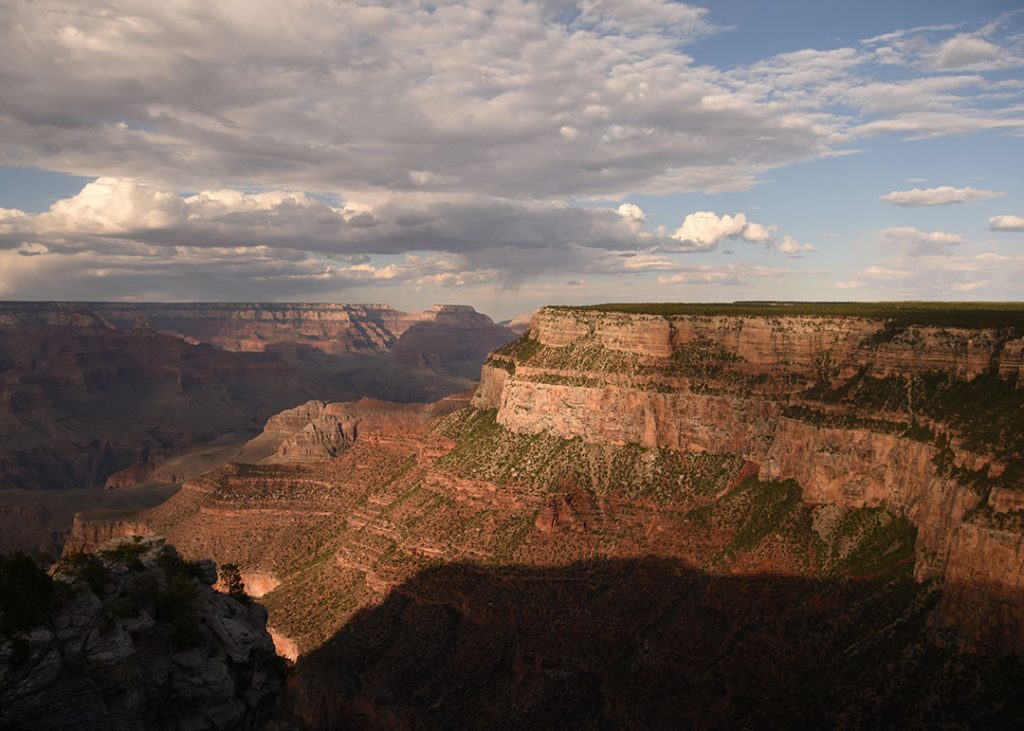
Human Exploration & Settlement
Early Native American Settlers
Native American families were among the first humans to encounter Zion National Park. Specifically, Anasazi, also known as the Basketmaker Ancestral Puebloans, began to settle and farm the region. Throughout the 11th and 12th centuries, this area experienced extensive droughts, which caused catastrophic flooding making the area uninhabitable. This drove the current settlers in the area to relocate.
European Exploration
After Native American settlers, European explorer Padre Silvestre Velez de Escalante began exploring Southern Utah in 1776. In 1825, under contract with the American Fur Company, trapper Jedediah Smith explored the area.
Mormon Pioneer Settlement
Soon after him, Mormon pioneers came to the area and began settling in the area known today as Springdale. Isaac Behunin, among the first settlers, farmed corn, tobacco, and fruit trees near today’s Zion Lodge.
Formation of Zion National Park
Zion National Park was first named Mukuntuweap National Monument, referring to a Paiute name. In 1918, the park was renamed Zion National Monument after a term from the Bible coined by Mormon settlers. Later, the monument gained national park status and was dedicated as a National Park by President Woodrow Wilson on November 19, 1919.
Preservation and Modernization
For years, the park has remained untouched by development and modernization, safeguarding the awe-inspiring views and unique flora and fauna diversity of Zion Canyon. However, the nearby city of Springdale has undergone expansion to accommodate the extraordinary tourism that has arisen in recent years.
The Development of Zion National Park
The Utah Parks Company holds a venerable place in the history of Zion National Park, significantly enhancing its accessibility and development. Established in the early 20th century, the company played a pivotal role in expanding tourism infrastructure. Led by Union Pacific Railroad, it operated lodges, provided transportation, and organized tours, making Zion accessible to more visitors.
The construction of Zion Lodge in 1927 underscores their dedication to offering comfortable experiences within the park. This investment transformed Zion into a premier destination, fostering appreciation for its scenic beauty and supporting its conservation ethos. The Utah Parks Company’s legacy endures as Zion remains a natural treasure, balancing human enjoyment with environmental preservation.
The Interwoven History of Zion National Monument and Zion National Park
Zion National Monument and its evolution into Zion National Park hold a significant place in southwestern United States history. Initially established as Mukuntuweap National Monument in 1909, its purpose was to preserve the area’s breathtaking canyons and natural wonders. In 1919, Mukuntuweap was renamed Zion National Park, emphasizing its majestic biblical grandeur and marking a pivotal moment in the conservation movement. This transformation underscored the importance of protecting unique and ecologically vital landscapes for future generations.
As time passed, the park’s boundaries expanded, leading to the designation of the surrounding area as Zion National Monument in 1937. This dual designation highlights a steadfast commitment to safeguarding the region’s remarkable geological formations, diverse ecosystems, and cultural significance. Zion National Monument and Park together highlight the vital importance of preserving this landscape’s natural beauty and historical legacy.
The Heartbeat of Zion National Park
Zion Canyon, with towering cliffs, the meandering Virgin River, and vibrant flora, epitomizes Zion National Park’s essence. Carved over millions of years by nature’s forces, the canyon showcases the park’s geological splendor. Its sheer rock walls feature iconic formations like the Great White Throne and the Court of the Patriarchs, drawing visitors worldwide. Zion Canyon, home to renowned trails like the Narrows and Angels Landing, offers adventurers intimate encounters with diverse ecosystems.
Besides its geological importance, Zion Canyon’s cultural and historical significance is evident through petroglyphs and archaeological sites of ancient habitation. As Zion’s heart, the canyon invites visitors to immerse in its beauty, embodying the park’s dedication to preservation.
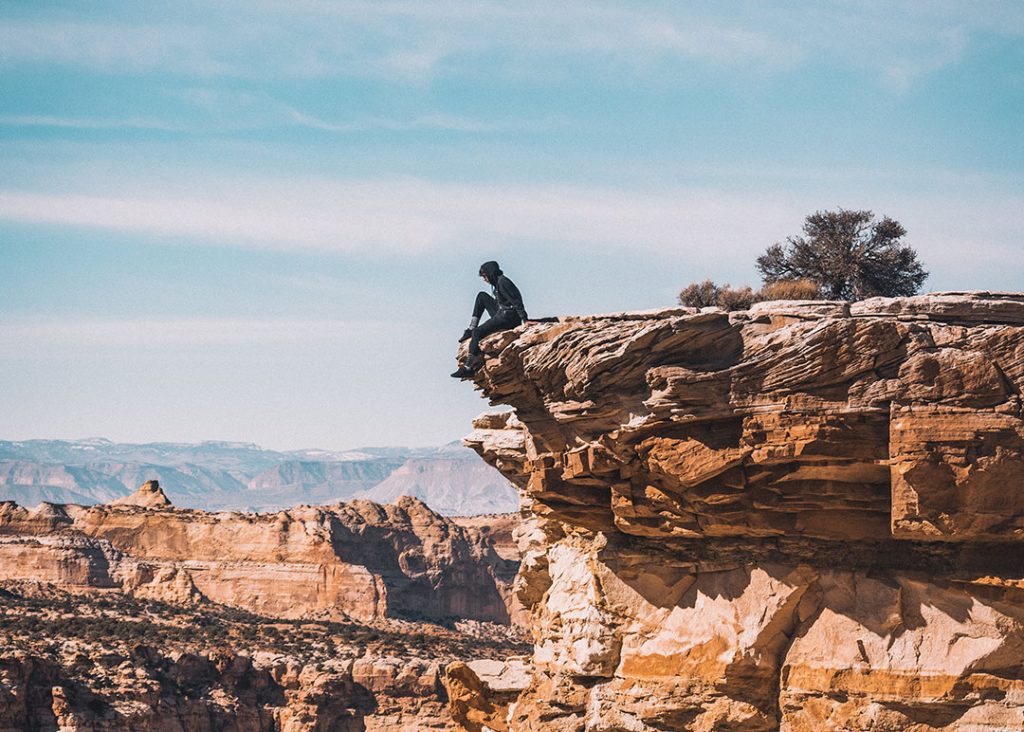
The National Park Service and Zion National Park’s Enduring Legacy
The National Park Service (NPS) plays a central and enduring role in the history of Zion National Park, representing the guardianship of America’s most cherished natural landscapes. In 1916, NPS took over Zion, which became a national park in 1919. NPS preserves Zion’s geology, ecosystems, and heritage.
Through the decades, the NPS has worked to balance the park’s popularity as a tourist destination with the imperative to protect its fragile environment. Ranger programs, education, and conservation foster Zion’s appreciation and ensure sustainability for future generations.
The NPS-Zion partnership safeguards natural and cultural heritage, making treasures accessible while preserving integrity.
It is now a site with a lot of potential of becoming a popular tourism spot. If you are someone who is intrigued and wants to immediately plan a visit, feel free to reach out to us. Make the most of exploring Zion National Park by booking your stay at Zion Canyon Campground, LaQuinta Springdale, or Fairfield Inn Virgin. See you soon!

